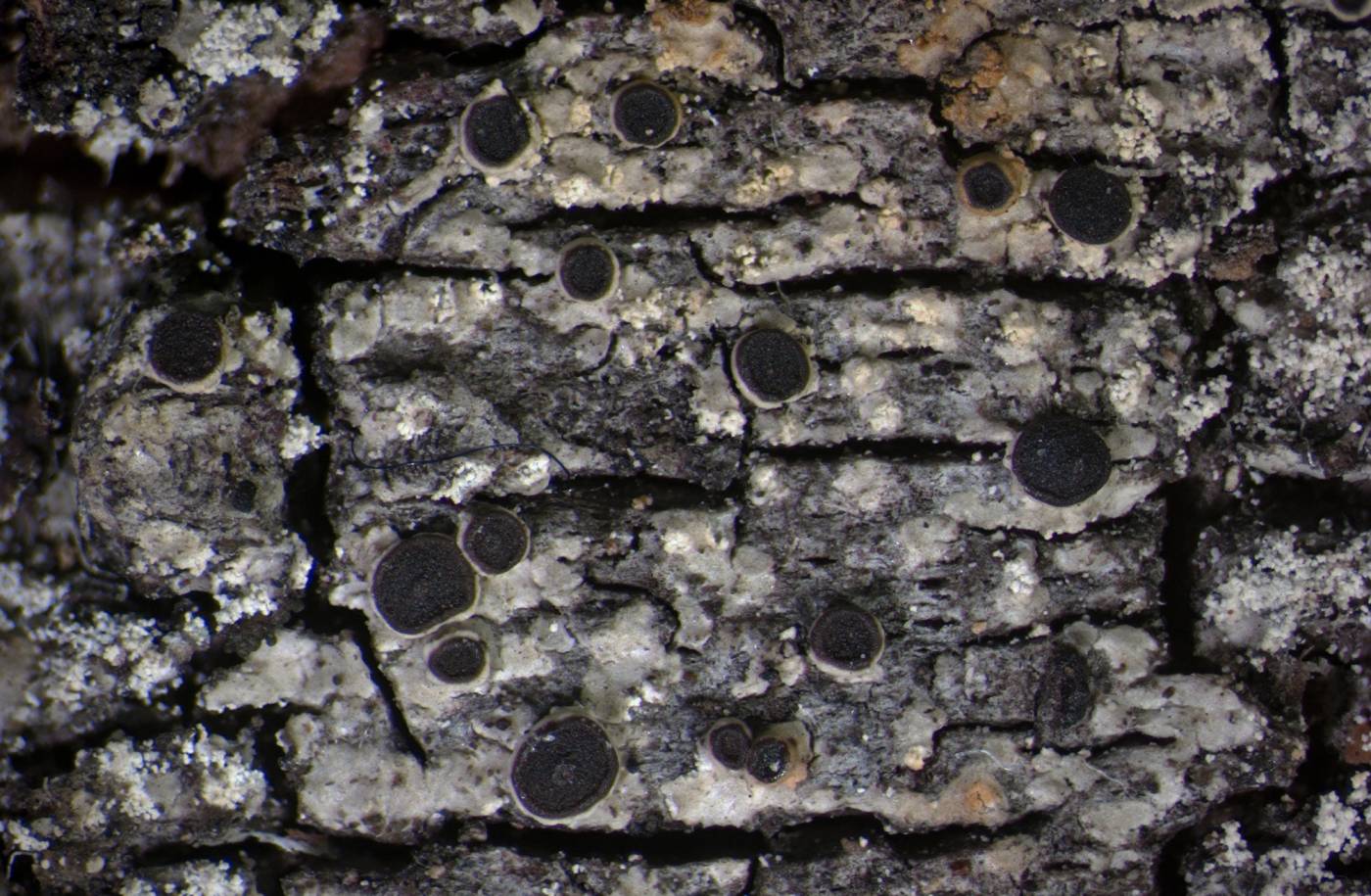An inconspicuous Rinodina with areolate to squamulose thallus. White soralia, which might merge in older thalli, are formed at the edge of the thallus, commonly on the raised underside of the areoles. Apothecia are very rare, with Physcia type spores (thickened cell wall near the septum and in the apices). It is similar to R. willeyi, which is distinguished chemically when sterile (produces pannarin instead of atranorin) and by the Pachysporaria spore type when fertile.
Rinodina subpariata occurs on nutrient-rich bark of deciduous trees (e.g., beech, oak and sycamore) from the lowlands to the mountains. It rarely colonizes wood as well. In the Czech Republic, it is found mainly on exposed tree trunks in old open forests, together with other crustose lichens. The species is more common in the southern part of the country, probably due to higher acidification on substrates in the northern parts in the past. It is widely distributed in the temperate zone of the Northern hemisphere. However, there is only a limited number of records from central Europe where it seems to be often overlooked.
taxonomic classification:Ascomycota → Lecanoromycetes → Caliciales → Physciaceae → Rinodina
most frequented synonyms:Rinodina degelianaOccurrence in the Czech Republic
All records: 137, confirmed 136. One click on a selected square displays particular record(s), including their source(s).


